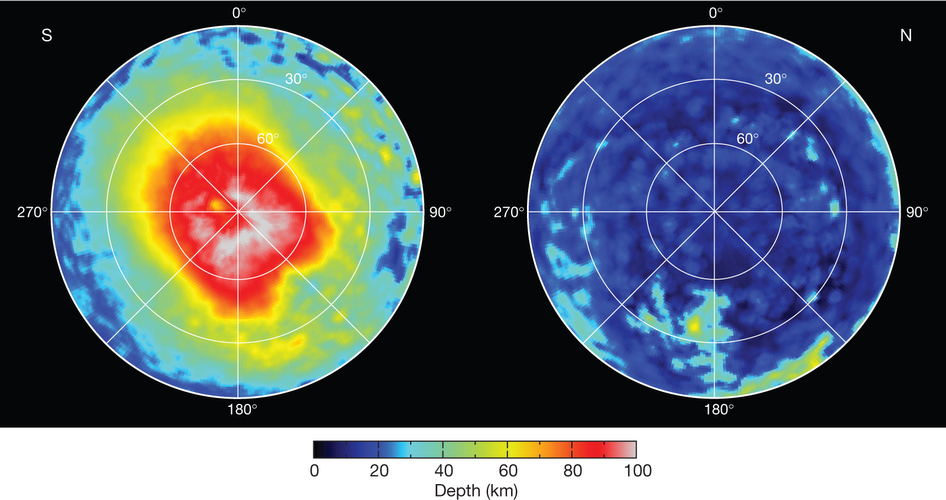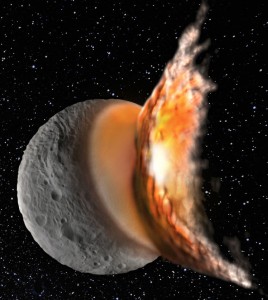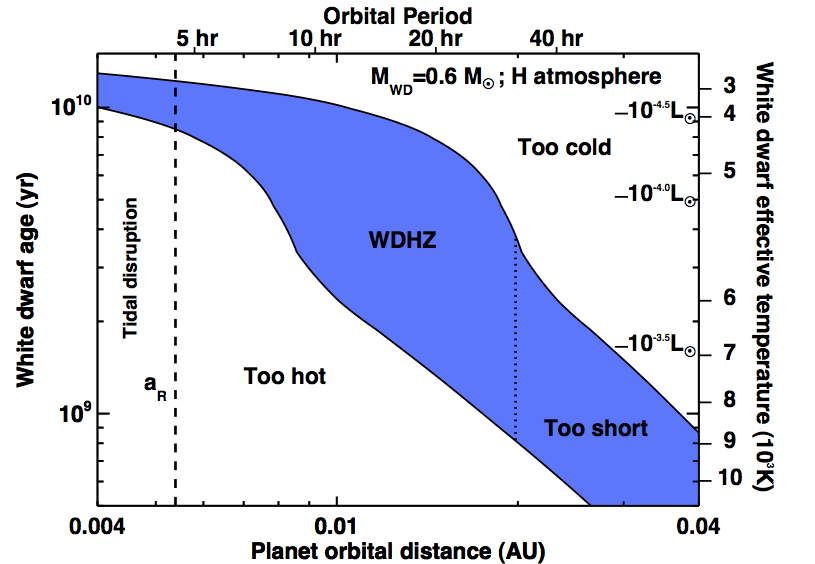- Title: The structure of the asteroid 4 Vesta as revealed by models of planet-scale collisions
- Authors: M. Jutzi, E. Asphaug, P. Gillet, J.-A. Barrat, & W. Benz
- First Author’s Institution: Physics Institute, Space Research and Planetary Sciences, Center for Habitability, University of Bern
Overview
Though all asteroids are pockmarked by numerous collisions, the southern hemisphere of the asteroid Vesta has been completely pummeled by two major impacts – dredging up material from deep below the surface. Jutzi et al. have created new 3D impact models that predict how the impact ejecta are distributed over the surface of Vesta. By comparing model predictions to the observations from the Dawn spacecraft, they can directly probe the material from the interior of the asteroid that has ended up on the surface. The problem: the measurements don’t detect the material they expected from a layered, differentiated body like Vesta was expected to be.
Background
Vesta is one of the largest bodies in the asteroid belt, second in mass behind Ceres, and third in size behind Pallas. Vesta does not have the spherical shape you would expect from an object of its mass because of the enormous impact basin in the southern hemisphere. The Dawn spacecraft, which orbited Vesta for over a year, discovered that the impact basin was actually two overlapping impact basins, named Veneneia (older impact) and Rheasilvia (younger, fresher impact).
Impact Models
The major impacts on Vesta make this asteroid ideal for studying its interior composition. The impacts excavate material from deep below the surface and distribute it all over the surface of the asteroid. If Vesta were a differentiated asteroid before the impact, as most theorists predict, the interior should be layered like an onion, with each layer composed of a different material. The deep impacts on Vesta should have dug up material from deep within the asteroid.
Jutzi et al. created a simulation to reproduce the global evolution of the surface material due to the impacts. They can trace where the material lands and from what depth it originated. Previous models of a major impact on Vesta have been unable to reproduce the global features seen. Those models assumed a random rotation axis before impact that created the Rheasilvia basin. Now, with the new observations from Dawn, they know that the rotation axis should be aligned with the older impact basin, Veneneia. Vesta’s rapid rotation (5.3 hours, almost 5 times faster than Earth’s rotation) plays a huge role in determining the ejecta pattern. Over large scales, the Coriolis force changes the ejecta velocities, making spiral patterns.
The simulation of the impacts on Vesta can be broken down into several steps.
- Step 1: Vesta starts out as a spherical, differentiated, non-rotating asteroid before the impact that created the Veneneia basin.
- Step 2: Veneneia basin is created in a giant impact – a 400 km wide basin is carved into Vesta; the asteroid is now rotating with its rotation axis aligned with the basin.
- Step 3: Using the new shape and spin as a prior, another large impact occurs, creating Rheasilvia basin.
Probing the Interior Composition
The impacts spread the excavated material from deep inside the asteroid all over the surface. The simulation described above calculates how the material should be distributed in the end, allowing for direct comparison with observations. Figure 2 shows the results of the model for both hemispheres. The color corresponds to the depth at which the material originated. The northern hemisphere is dominated by material that comes from a depth of 20 km. In the southern hemisphere, where the impacts occurred, the surface is covered by ejecta from a depth of 60-100 km.

Figure 2 - The final distribution of material after two successive impacts. The color corresponds to the depth the material originated from before the two impacts. Left: Southern hemisphere (location of the two impacts). The surface is filled with material from 60-100 km deep. Right: Northern hemisphere. The surface is dominated by material from only 20 km deep.
If Vesta is a differentiated asteroid, as suggested by several models, it should have a top crust (0-40 km deep) made of Eucrite and Diogenite – basaltic rock formed from the cooling of magma. Below the crust there should be an olivine-rich mantle surrounding a metal core. The impact models suggest that material from the mantle region should have been ejected over the surface of the southern hemisphere of Vesta. Material in the impact basins comes from a depth of 60-100 km, well within the expected mantle region (depth >40 km). Figure 3 shows some of the different models of the interior composition Jutzi et al. tried and the resulting distribution on the surface. The models clearly predict that there should be olivine-rich rocks on the surface of the southern hemisphere.
The problem: The Dawn spacecraft did not see any olivine on the surface. Its spectroscopic instruments scanned the surface and found a lot of evidence for Diogenites, but not olivine.
So where is the olivine? Jutzi et al. suggest three possibilities:
- Olivine is present on the surface, but it is hard to detect
- Vesta has a much thick crust than expected, possibly down to 100 km deep
- The outer 100 km of Vesta was already well mixed by smaller collisions before the Veneneia event






